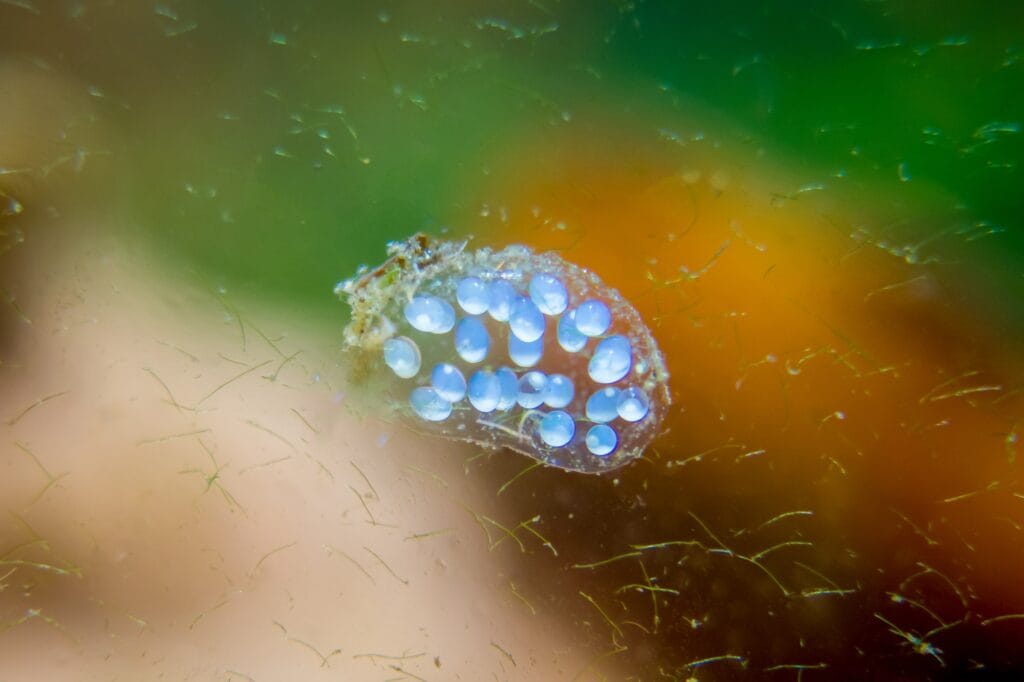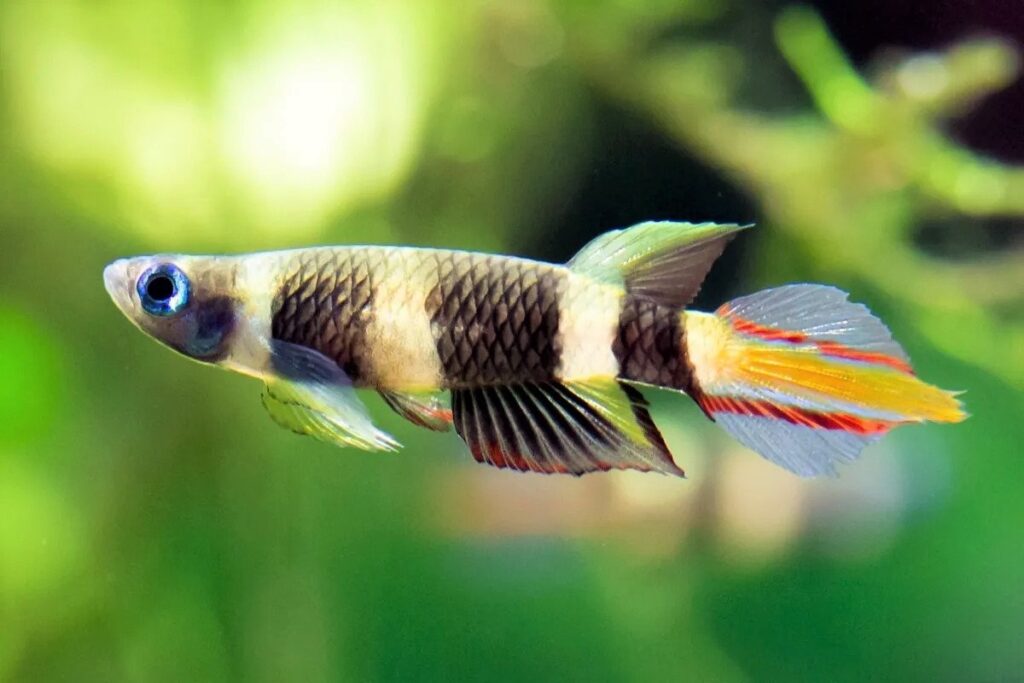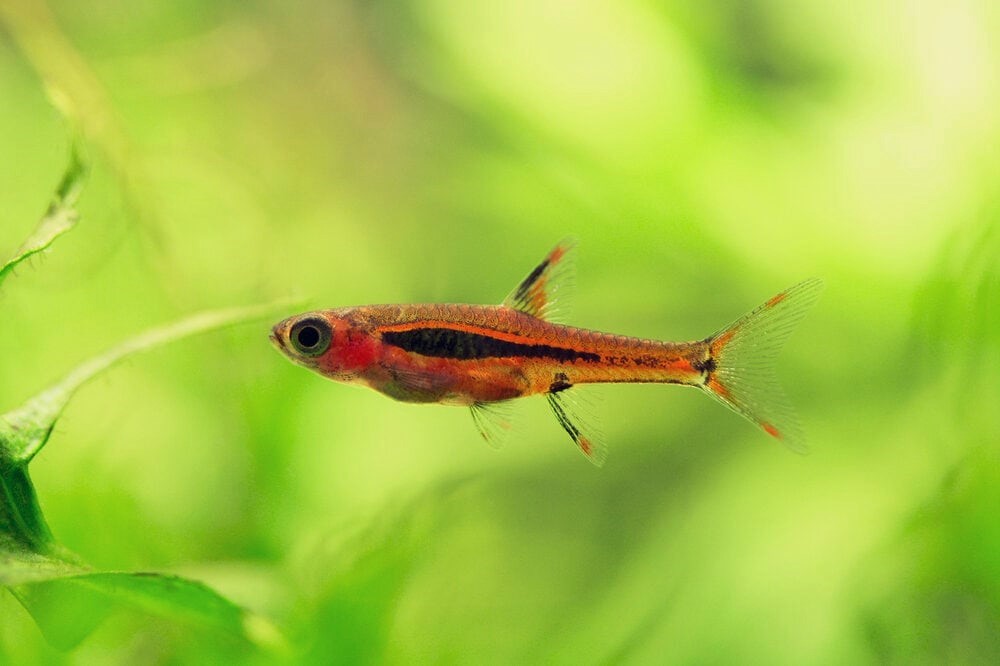Did you recently notice mystery snail eggs in aquarium? You might be thinking that they should not be there, but it happens even with utmost care. You can see a tiny cluster of snail eggs on the decorations and other aquarium parts when you first detect their presence.
Snails are a great contributor to aquarium cleaning at the cost of their prolific reproduction. You may deliberately add them to get the cleaning job done, but they can disturb the balance in the aquarium if left unchecked.
Sometimes, hobbyists add them to the aquarium to use them as a nutrition source for the other aquarium inhabitants. Snails have different advantages, and most of the hobbyist don’t even consider them as pests. Their situational use makes them friend or evil according to the circumstances. But there is moderation required when placing them in the aquarium.
Besides all the good and bad qualities, you must know their behavior, egg-laying, appearance, and care to detect them in the aquarium. They can cause infestation inside the aquarium if left undetected or untreated.
Snail Eggs Overview
| Family | Buccinidae, Planorbidae, Ampullariidae |
| Temperament | Peaceful |
| Minimum Tank Size | 5-gallon |
| Care Level | Easy |
| Color | Clear |
| Size | 0.030 – 0.035 cm |
| Gestation | Under 5 weeks (species specific) |
| Role | Tank cleaner, food source |
| Tank Setup | Freshwater with plants |

Snails are notorious for getting inside the home aquarium unchecked, and their freshwater species lay eggs on the top of the rocks, and the outer surface of the plant leaves. At the same time, some species lay eggs on the aquarium glass. Few snail species are livebearers, and they do not lay eggs. Japanese Trapdoor Snails are the one famous example of these snails.
We can also differentiate them by their intensity of laying eggs and prolific multiplication. For example, Ramshorn Snails and Bladder snails comparatively reproduce often and lay tons of eggs compared to the Rabbit Snails and Assassin Snails.
Snail eggs in aquarium get introduced inside either deliberately or unknowingly. A deliberate introduction helps hobbyists with cleaning or food purpose. Their population has a better chance to remain in check because you already know about their presence in the aquarium.
Sometimes, snail eggs in a freshwater aquarium can come along the decoration or the new plant when not quarantined for at least 14 days before introducing in the aquarium. Due to their minute size, their eggs are difficult to spot with the naked eyes, and they show their presence after hatching from eggs.
Appearance
Snail eggs in an aquarium are not visible to the naked human eyes due to their tiny size and clear appearance. Most of the egg types are tiny and ranges from 0.030 cm to 0.035 cm in size. However, their appearance can vary between the species, like we see dark spots on the eggs of the Mystery Snails. The dark spot is an embryo that is visible due to a transparent egg.
The eggs are tiny and transparent, but the whole cluster of eggs has a clear appearance and size near 0.64 cm. The cluster size varies again depending upon the species and number of eggs. Mystery snails are famous for their larger cluster, and sometimes they can reach 150 eggs, while Ramshorn snails have a smaller cluster of a dozen eggs.
For the timely and easy identification of the snail eggs in the home aquarium, watch out for the plant leaves’ rock surface and outer side. They can lay eggs even in the clutches of the aquarium glass, which upon hatching can drop in the aquarium water.
How to care for snail eggs in aquarium
Tank Conditions:
Snails do not have specific substrate requirements inside the aquarium. If you plan to raise them inside the aquarium from eggs to the hatching and maturity, then placing rocks, driftwood, and plants inside the aquarium helps a lot. They lay eggs on these structures for hatching.
An aquarium for snails does not need a filtration system as they can live in these conditions, but for keeping the snails after the egg hatching, a filter is a pre-requisite. However, an ordinary filter is enough to keep them happy except for Ramshorn Snails, requiring a low level of ammonia and nitrate in the tank water.
Water Conditions:
Snails mostly prefer warm water conditions inside the aquarium. Warm water support both breeding and relatively faster hatching of eggs. Although different species have different requirements, they usually need a temperature between 60°F to 80°F.
We can utilize this temperature requirement to limit the egg-laying and hatching. Lowering the temperature can result in lower egg-laying and hatching compared to the warmer temp. But you have to keep in mind the temperature requirement of other fish and plants.
Snails like alkaline water and grow prolifically under alkaline conditions. However, Nerite Snail eggs in aquarium-like salty water, and they need it for hatching. Recreating their wild environment can result in good hatching and growth of young ones.
Important water parameter for Snails are the following:
- Water hardness: 5-15 dKH
- pH Levels: 7-7.5
- Water Temperature: 60°F – 80°F
Tank Size:
Snail species can grow well in all types of fish tanks. They only need space for egg-laying and hatching provided with a small or large tank. The minimum tank recommendation for snails is a 5-gallon tank as there are other fish and plants in the tank. However, you may need a larger tank if all the space gets occupied by snails and no room left for egg-laying and hatching.
Tank Mates:
Selecting the suitable tank mates for snail eggs depends on your intentions with the eggs. If you do not want to keep them in the tank and require complete removal, then Predatory fish is the best choice to place inside the tank.
For getting them to hatch and keep them for cleaning the aquarium, you must avoid them placing with the fish that oblige them as a feeding resource.
Feeding:
Snail eggs in aquarium do not need nutrition. However, you can control the nutrition of the parent snails to increase or reduce the number of eggs. As you already know that snails feed on the food leftover and algae in the aquarium.
You can restrict their numbers in an aquarium by preventing overfeeding the fish. This controlled feeding can decrease the food supply to the snails and reduce their chances of survival and eggs laying in the aquarium.
You can also adapt to minimize the onset of snail eggs in the aquarium by manually cleaning the algae from the rocks and trimming the plant regularly. This regular maintenance reduces the chances of algae growth on which they feed and then lay eggs.

Snail’s Reproduction Process
Snails utilize more than one-two reproduction methods for the propagation. Some snails lay eggs, while some give birth to the snails and keep eggs inside them. Here are the types of reproduction that we see in the snails
Sexual:
This is the traditional reproduction that we see in most snails and other aquarium animals. It involves both males and females for successful egg-laying. These species lay eggs in the form of clusters that exceeds 200 eggs per cluster.
How long do aquarium snail eggs take to hatch? Well, it takes between 1 to 5 weeks depending upon the type of species.
Brotia Pagoda Snails, Assassin Snails, Japanese Trapdoor Snails, Nerite Snails, Rabbit Snails, and Mystery Snails are examples of sexually reproducing snails.
Asexual:
This type of reproduction happens without a male, and only female snails are born due to asexual reproduction. This type of reproduction is a partial clone or clone of the parent and scientifically known as parthenogenesis.
Malaysian Trumpet Snails are a famous example of asexually producing snails. You won’t see their eggs inside the aquarium because of the absence of that process.
Hermaphrodite:
This term refers to the snails that can switch gender and are independent of their reproduction. They can do both tasks of laying eggs and fertilize those eggs by changing the gender. Being hermaphrodite makes them survive better in some situations.
Ramshorn Snails. Bladders Snails and Pond Snails are examples of hermaphrodite snail species.
Measure to Control Population
You might be thinking that “How to get rid of snail eggs in aquarium?” Well, we are going to answer these precisely in the following few lines.
The first and the most important thing to prevent the build-up of the snail population and eggs inside the aquarium is to clean it regularly. Maintain the hygiene conditions by removing the dead plants, changing the water, cleaning the rocks and decorations.
There are high chances of snail egg infestation inside the aquarium from an external element. If you introduce new plants or decorations to the aquarium, ensure them for at least 14 days before introducing the aquarium.
Another method you can adopt is the dip method. You can prepare dip by mixing hydrogen peroxide, bleach, or salt. Once it is ready, dip the live plants or decorations in the mixture before adding it to your aquarium. Doing so can kill the snail eggs residing on the plant or decoration surfaces.

You can add tank mates that we already mentioned. As predatory fish are good for eating the snail and their eggs, introducing them inside the aquarium provides reasonable control, and snails act as food resources for fish nutrition needs.
Feeding the fish only what they need can also control the snails in the aquarium. As optimum feeding levels do not leave much food scraps for snail feeds. There are fewer chances of getting them food waste if we feed fish only the required amounts.
Removing the snail eggs manually from the aquarium is also an option if you want to control their population. But this method only works if you are good at detecting snail eggs. To do so, look for the decoration and outside of the plants to spot any cluster of snail eggs.
If you do not want any hassle and want to use chemical procedure, then using copper-based medicine can kill the snails as copper is toxic survival of snail and their eggs. But bear in mind that it can also affect the population of fish in the aquarium.
Moreover, cleaning the mess by poisoning the snail also requires some time as dead snail bodies and eggs can add debris to the aquarium. They can raise the level of ammonia and nitrates inside the aquarium, causing water toxicity.
Snail Eggs Benefits
Snail eggs are not always harmful to the aquarium’s health, and they can contribute towards the beneficial aspects.
They are the primary source for predatory fish species like catfish, loaches, goldfish, and others. As some of these fish are large, therefore they need a bigger aquarium. You need to check the compatibility of these fish with existing fish in the aquarium to avoid any predatory interaction between fish.
Snails are good tank cleaners and can do the cleaning task by feeding food leftovers and eating the algae from the decoration surfaces. However, you need to keep a check on their population. Assassin snails are best to keep a check on the snail population as they kill other snails.
Snail Eggs Disadvantages
Snail eggs in the aquarium are challenging to spot, and controlling their population can be difficult. If their unchecked infestation occurs inside the tank, then they can increase drastically in numbers. The infestation gets more troublesome when they start competing for resources.

As we already mentioned about the role of snails in cleaning the tank. But in some cases, they contribute more towards the debris inside the aquarium. They can disturb the water parameters and more likely contribute to more waste inside if they increase in numbers.
Snail eggs can find their way inside the aquarium if you want or not. They are not always harmful and can contribute towards the beneficial aspects as well. But their population needs to remain in check, and an increased population over the normal can cause an imbalance inside the aquarium. You can avoid their infestation by following the strict measures and keeping the quarantine measure in place.
Summary

